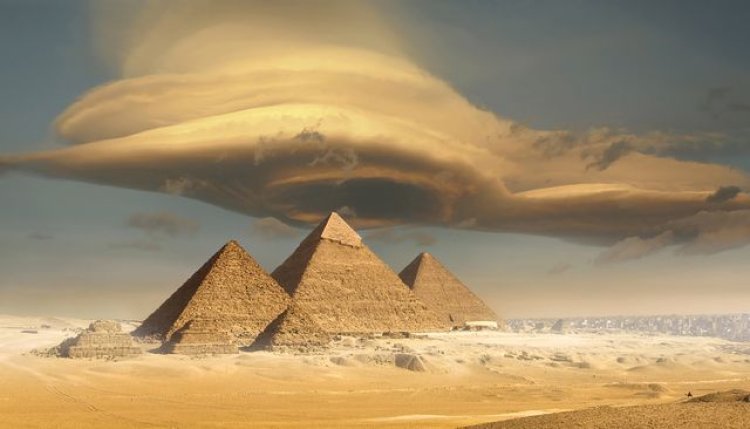Discovering Egypt
Discovering Egypt - Egypt boasts millenary archaeological finds, a lively and suggestive capital, a boundless desert and overlooking a crystalline sea

An extremely fascinating country, rich in history and mystery. Egypt boasts millenary archaeological finds, a lively and suggestive capital, a boundless desert and overlooking a crystalline sea, whose coral reef is among the most beautiful in the world.
With such a wide variety of attractions, visiting the country can only leave you spoiled for choice, so much so that tourists return to Egypt over and over again to appreciate every aspect.
History buffs certainly cannot fail to include a visit to the Giza Necropolis, one of the most famous monumental complexes in the world, in their itinerary. The three great Pyramids of Cheops, Chephren and Menkaure are part of the Necropolis – the only ones left among the Seven Wonders of the Ancient World -; the legendary Sphinx, the City of Priests, the Pyramids of the Queens and the Mastaba Area which houses the smallest tombs intended for the officials of the Kingdom. The complex is located, along the Via delle Pyramidi, just 9 kilometers from Cairo: as soon as you leave the city, already in the middle of the Sahara, the view of the imposing Pyramids that stand out in the desert literally leaves you breathless.
The largest pyramid is that of Cheops, ruler of the fourth dynasty: 137 meters high, achieved by adding one after the other, with a huge and still inexplicable effort, 2 million huge blocks of stone. Proclaimed part of the UNESCO World Heritage Site in 1979, it is perhaps the Egyptian monument that anyone must necessarily see on a trip to Egypt. Next to the Pyramid of Cheops are the smaller pyramids that were reserved for the Queen and the Pharaoh's daughter, as well as the Museum where the Solar Boat is kept, the boat dating back to 4600 years ago and which, according to legend, was supposed to accompany Cheops on his journey to the sun.

The capital of Egypt, Cairo, is the most populous city on the African continent and holds a lot of history and culture.
The main attraction is certainly the Egyptian Museum, which houses the largest collection of Ancient Egyptian artifacts in the world. Inside, 135,000 works: every component of inestimable value from the Treasury of Pharaoh Tutankhamun, including the three sarcophagi, one of which is in solid gold, like his mask; the treasure of the Tomb of Hetephres, the Mummies Exhibition with its 27 royal mummies (remember those of Seti I and Ramses II) and countless other finds.
Other complexes of archaeological interest along the banks of the Nile are Luxor and Karnak, which rival in terms of majestic temples and monuments of Ancient Egypt.
In Luxor, located where ancient Thebes once stood, is the Great Temple of Amon, god of the wind, with its beautifully decorated columns and enormous statues. The surrounding archaeological site which extends over 100 hectares.
Across the Nile Karnak, the largest monumental complex ever built by man. Here begins the famous Valley of the Kings, where the Egyptian rulers from the XVIII to the XX dynasty were buried. Inside the structures, hieroglyphics and mural representations are still visible: among the most beautiful, those that lead to the tombs of Seti and Tutankhamun.
No less fascinating is the nearby Valley of the Queens, where the famous Nefertari also rests.
Finally, one last archaeological complex of great importance is that of Abu Simbel. The site was built by Ramses II to intimidate the Nubians and to honor the victory in the battle of Qadesh obtained over the Hittites. Abu Simbel consists of two huge rock temples, the Great Temple and the Small Temple: two engineering masterpieces that testify to the ancient Egyptians' profound knowledge of astronomy. In fact, inside the Great Temple the first ray of sunshine of the day illuminated the face of the statue of the pharaoh twice a year, on February 21st and October 21st, two dates attributable respectively to the celebrations for the beginning of the cultivation season and the start of the flood season.
Not just history and culture. Egypt also offers incredible naturalistic points of interest (red sea) , The renowned Red Sea boasts various holiday resorts for lovers of the sea and relaxation: there are many resorts in Sharm el-Sheik, Hurghada or Marsa Alam. Very fine sand, crystal clear waters and one of the most beautiful and colorful coral reefs in the world.


















